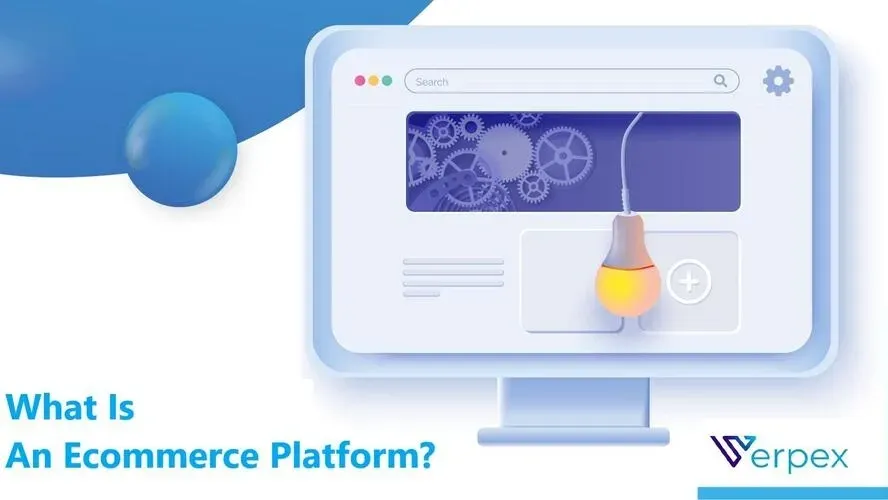If you're planning to launch an online store from scratch, an eCommerce platform can be a complete lifesaver.
Whether your business targets other businesses (B2B) or individual consumers (B2C), these platforms are essential for any online venture.
They provide a way to display and sell products online, helping you reach a wide audience of potential customers.
In this article, we'll explore what an eCommerce platform is, the different types available, and how to choose the right one for your business.
What Is an Ecommerce Platform?
An eCommerce platform, such as WooCommerce, Shopify and Magento, is a software solution that allows businesses to sell and deliver digital products or services online.
By using e-commerce platforms, businesses are able to manage the complex processes of their business more efficiently.
Small and medium-sized businesses can benefit from e-commerce platforms, which allow them to better gauge their sales and marketing strategies as well as sell more effectively.
Types Of ECommerce Platforms
1. SaaS (software-as-a-service) platforms
SaaS eCommerce platforms simplify running an online business by letting you rent the platform instead of building your own.
They are cheaper than other options and handle PCI compliance, hosting, security, updates, and other management tasks.
Examples of SaaS eCommerce platforms include Magento, Shopify, and BigCommerce.
PaaS (platform-as-a-service) platforms
PaaS providers host both the software and hardware, managing the hosting infrastructure.
PaaS and SaaS options are ideal for smaller companies or new businesses entering the eCommerce market.
They provide professional support and setup, usually charging a monthly fee for site usage.
CaaS (commerce-as-a-service) platforms
CaaS platforms, like ReactJS and Headless Commerce, use AI to automatically create and deliver content to consumers.
It eliminates the need for human intervention and can be used to automate marketing, customer service, product development, and more.
On-premises platforms
On-premises platforms are exceptionally efficient and scalable compared to their alternatives.
They provide full control over software components, enabling you to optimize your IT budget.
Additionally, you have complete authority over the security of your data and systems.
Among the many on-premise platforms available, Magento Open Source and WooCommerce stand out.
How To Choose An Ecommerce Platform
Choosing the right eCommerce platform is vital for your online business's success.
The platform will impact your website's functionality, user experience, and overall growth.
Follow these key steps to make an informed decision.
Step#1: Determine your eCommerce needs
The first step in choosing an eCommerce platform is to identify your needs.
Knowing your requirements simplifies the selection process.
Consider if you plan to expand, the features you want, and how customer orders will be fulfilled.
Step#2: Budgeting
Next, determine your budget for the eCommerce platform.
Look beyond development and licensing costs to include consultation, setup, and maintenance expenses.
Ecommerce platform costs will vary depending on the solution, the sales volume, and the size of your business.
Step#3: Research eCommerce solutions
After you’ve got an idea about how much you’re willing to spend, you should research eCommerce solutions available on the market. Choose the one that best suits your needs.
Key Features of Ecommerce Platforms

Choosing the right eCommerce platform involves understanding the essential features that will support your business operations and growth.
Lets quickly review some key features to consider when evaluating eCommerce platforms:
Promotion opportunities
There are many ways you can promote your online stores with most eCommerce platforms.
The key factor to consider is SEO, so make sure you remember to look for SEO-friendly eCommerce platforms.
Support
Technical issues are inevitable when running an online store.
To minimize downtime and quickly resolve problems, ensure your eCommerce platform offers robust support.
Check their website for guides, how-to articles, and FAQs. Also, verify the available customer support channels and their response times.
Security
Customer data protection is crucial. To avoid data breaches, choose an eCommerce platform with strong security options
The eCommerce platform should offer an SSL certificate and meet the PCI security standards.
However, besides these standard security practices, a lot of eCommerce platforms offer extra options, such as protection from DDoS attacks and fraud.
Payment processing
Payment processing is a complex process that is essential to an online store.
Consider your customers' preferred payment methods, currencies, and tax systems.
If you need to expand the opportunities of your eCommerce platform, you can integrate 3rd party services with your platform.
Store management system
To run a store, you need systems for order, product, and return management.
The eCommerce platform you select should either integrate with services that offer these systems or include them in its standard package.
Design options
Most eCommerce platforms offer many ready-to-use templates and themes for easy website customization.
When choosing an eCommerce platform, pay attention to how many paid and free templates it offers.
Interface
Choose an eCommerce platform with an intuitive, user-friendly interface for building your website.
Some platforms may require technical skills like WordPress or HTML knowledge.
Look for a platform that lets you create both product pages and blog posts, a feature essential for SEO and content marketing to attract new customers.
Side-by-Side Ecommerce Platform Comparisons
WooCommerce vs. Shopify
Here’s a side-by-side comparison of WooCommerce vs. Shopify at a glance.
| Feature | WooCommerce | Shopify |
|---|---|---|
| Technical Skill Requirement | Requires a willingness to learn or some degree of technical knowledge | No coding or technical skills needed |
| SEO Capabilities | Offers a range of SEO plugins and helpful SEO guides | Limited SEO apps available |
| Customization | Highly customizable with numerous plugins and themes | Limited customization options compared to WooCommerce |
| Cost | Free to use but requires payment for hosting, themes, and plugins | Monthly subscription fees, with additional costs for apps and themes |
| Scalability | Can handle large stores but may require additional optimization and resources | Easily scalable with built-in features for growing businesses |
| Ease of Use | Steeper learning curve due to technical aspects | User-friendly with a straightforward setup process |
WooCommerce vs. Magento
Here’s a side-by-side comparison of WooCommerce vs. Magento at a glance.
| Feature | WooCommerce | Magento |
|---|---|---|
| Popularity | Widely popular | Widely popular |
| Setup Cost | Cheap to set up | Typically more expensive to set up |
| Ease of Use | Easy to use, perfect for small businesses that need to get off the ground quickly | More complex, requiring technical expertise |
| Advanced Features | Basic functionality for product personalization, advanced pricing rules, wish lists, and grouped items available through plugins | Offers built-in advanced features like product personalization, advanced pricing rules, wish lists, grouped items, and product reviews |
| Scalability | Suitable for small to medium-sized businesses | Highly scalable, suitable for large enterprises |
| Community Support | Extensive community support with numerous plugins and themes available | Extensive community support with numerous extensions and themes available |
The Importance Of Hosting For Ecommerce
Creating an eCommerce store requires selecting the right eCommerce website hosting.
Hosting your own store ensures your business is accessible, trustworthy, and professional.
It's crucial to choose a reliable and fast hosting provider that offers competitive features such as enhanced speed, encryption, and backups.
Additionally, ensure the provider offers ample bandwidth, file storage, and support to help your online store thrive.
Social Proof and Trust Signals in Ecommerce

In the competitive world of eCommerce, social proof and trust signals are critical for boosting client confidence and increasing sales.
Here are key elements to consider:
Customer Reviews and Ratings
Displaying genuine reviews and ratings from previous buyers can significantly influence potential customers' purchase decisions.
Highlighting positive feedback and addressing negative comments transparently builds trust.
User-Generated Content (UGC)
Encourage customers to share their experiences with your products through photos, videos, and testimonials.
Featuring UGC on your site and social media adds authenticity and relatability to your brand.
Trust Badges and Certifications
Showcasing trust badges such as SSL certificates, payment security logos, and industry certifications reassures customers about the safety and legitimacy of your site.
Influencer Endorsements
Collaborating with influencers who align with your brand can enhance credibility and expand your audience.
Showcase endorsements and partnerships on your website to capitalize on their trustworthiness.
Social Media Mentions
Showing real-time social media mentions and interactions highlights your brand's activity and engagement with its community.
This visibility can boost trust and encourage further interaction.
Visible Contact Information
Clearly displaying your contact information, including a phone number, email address, and physical address, helps reassure customers that your business is legitimate and easily reachable.
Money-Back Guarantees and Return Policies
Offering clear, customer-friendly return policies and money-back guarantees reduces the perceived risk of purchase and enhances trust.
Ecommerce Platform Vs. Marketplace
Marketplace and eCommerce are two different types of platforms.
Let’s take a closer look at Ecommerce Platform Vs. Marketplace.
| Feature | Marketplace | eCommerce |
|---|---|---|
| Platform Type | A platform where customers purchase goods, connect, and find sellers | A website built with the help of eCommerce solutions such as Magento, WooCommerce, Shopify, etc. |
| Customer Interaction | Facilitates interactions between multiple buyers and sellers | Direct interaction between the store and the customers |
| Product Source | Products are sold by multiple sellers | Products are sold by a single business or entity |
| Business Model | Operates as a mediator between buyers and sellers | Operates as a standalone store selling its own products |
| Examples | Amazon, eBay, Etsy | Magento, WooCommerce, Shopify-powered stores |
Final Remarks
When choosing an e-commerce platform, ensure it includes the necessary features, functions, and standard tools for your store.
Consider the broader uses of your e-commerce store beyond just selling products.
Remember, planning a store involves more than just product categories and daily specials.
Opt for a system that delivers value to customers while staying adaptable to changes in the eCommerce landscape.
Frequently Asked Questions
How customizable is my ecommerce store?
This depends on the eCommerce tool you use. For example, Magento is 100% customizable, and you can amend just about every aspect. Shopify on the other hand has far fewer customization options.
Are there different types of WooCommerce hosting?
You can go for a shared option, which is the cheapest, or upgrade to other business solutions like VPS and dedicated hosting, which are designed to handle more site traffic and come with faster speeds.
How much does WooCommerce hosting cost?
Prices are very reasonable and start from just $2.99 per month at Verpex.
How easy is it to switch between WooCommerce and Magento?
At Verpex we can host either site no problem. However, you’ll need to be aware that there can be some difficulties due to the customizable nature of Magento, and functionality could be lost.
Can I switch eCommerce platforms without losing my SEO ranking?
Yes, switching platforms without significantly affecting your SEO is possible. It requires careful planning, such as maintaining URL structures, setting up 301 redirects, and keeping content consistent.
Consulting with an SEO expert during the migration can help preserve your rankings.
How do I integrate my eCommerce platform with social media?
Many eCommerce platforms provide built-in tools or plugins for social media integration. These may include social media shopping ads, share buttons, and analytics to monitor engagement.
Explore your platform's features or consider third-party tools for more comprehensive integration.
How do I choose the right payment gateway for my eCommerce platform?

I've been navigating the web hosting waters for years now. As the Chief Editor at Verpex, I team up with some awesome writers to dish out the good stuff on hosting. Got a Master's in Journalism, so I always have an eye out for quality. Whether you're just dipping your toes or you're a seasoned surfer, I'm here to make everything web hosting feel like a breeze
View all posts by Julia Lozanov





















